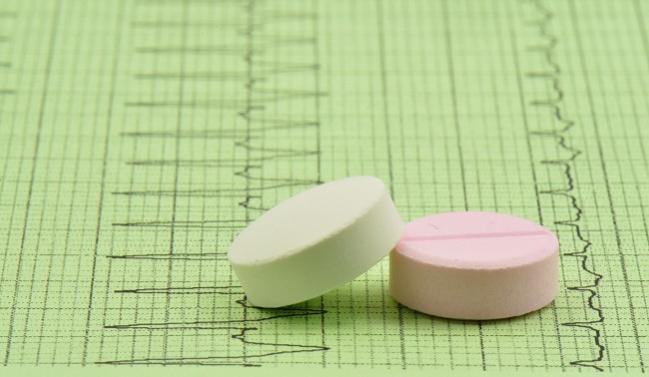Rivaroxaban, Warfarin Provide Similar Results Early After Mild Strokes Related to A-fib
New ischemic lesions or intracranial hemorrhages on MRI were comparable with the two agents in the Triple AXEL phase II study.

Patients started on oral anticoagulation within 5 days of having a mild acute ischemic stroke seem to do well on either rivaroxaban or warfarin, a proof-of-concept study shows.
The combined rate of new ischemic lesions or intracranial hemorrhage (ICH) seen on MRI at 4 weeks was 49.5% in those started on rivaroxaban and 54.5% in those started on warfarin (RR 0.91; 95% CI 0.69-1.20), according to lead author Keun-Sik Hong, MD (Ilsan Paik Hospital, Goyang, South Korea), and colleagues.
There were no symptomatic ICHs, and only one patient in each group had a recurrent clinical ischemic stroke, the investigators report in a study published online September 11, 2017, ahead of print in JAMA Neurology.
“Therefore, either rivaroxaban or warfarin initiated within 5 days of stroke onset was comparably safe and effective for preventing clinical recurrence of ischemic stroke in patients with [A-fib] and mild acute ischemic stroke,” they conclude.
Patients with A-fib-related acute ischemic strokes carry high risks of recurrent ischemic strokes and ICH shortly after the event, and there is uncertainty about the best way to manage patients during that period.
“The most widely used antithrombotic management strategy in clinical practice is to start aspirin and then to initiate oral anticoagulation after several days or 1 to 2 weeks when the risk of intracranial hemorrhage is likely to have subsided,” Hong et al explain. “Nonetheless, the optimal oral anticoagulation strategy for acute ischemic stroke, regarding when, in whom, and which drug, remains unclear.”
Triple AXEL
The Triple AXEL study, an exploratory phase II trial conducted at 14 centers in South Korea, explored the issue in patients with mild A-fib-related strokes within the past 5 days. The study included 195 patients randomized to rivaroxaban at a dose of 10 mg/day for 5 days followed by a dose of 15 or 20 mg/day (depending on creatinine clearance) or to warfarin adjusted to a target international normalized ratio of 2.0 to 3.0. MRI was performed at baseline and at 4 weeks.
The primary composite endpoint did not differ between study arms, and neither did the individual components: new ischemic lesions (29.5% vs 35.6%; RR 0.83; 95% CI 0.54-1.26) and new ICH (31.6% vs 28.7%; RR 1.10; 95% CI 0.70-1.71). All of the new hemorrhages were asymptomatic hemorrhagic transformations.
The only outcome that was not similar between study arms was hospital stay, which was shorter in rivaroxaban-treated patients (4.0 vs 6.0 days; P < 0.001).
“More rapid achievement of full anticoagulation with rivaroxaban likely enables patients to be discharged earlier,” the authors speculate, adding that using the non-vitamin K antagonist oral anticoagulant (NOAC) might reduce costs.
Adverse events, adverse drug reactions, and serious adverse events occurred at similar rates in the two groups, and there were no deaths.
“The Triple AXEL trial shows that starting anticoagulation for [A-fib] with warfarin or rivaroxaban at a median of 2 days after mild acute stroke did not lead to a high risk of symptomatic ICH or a detectable reduction in early ischemic stroke,” Kelvin Ng, MBBS (McMaster University, Hamilton, Canada), and William Whiteley, BMBCh (University of Edinburgh, Scotland). “Early anticoagulation with a direct oral anticoagulant and warfarin in patients with mild stroke is feasible, but whether this is of benefit to all patients with acute stroke and [A-fib] has yet to be demonstrated.”
They note that at least three trials are exploring early versus late initiation of NOACs in this setting: ELAN, START, and the Timing of Oral Anticoagulant Therapy in Acute Ischemic Stroke With Atrial Fibrillation study.
Todd Neale is the Associate News Editor for TCTMD and a Senior Medical Journalist. He got his start in journalism at …
Read Full BioSources
Hong K-S, Kwon SU, Lee SH, et al. Rivaroxaban vs warfarin sodium in the ultra-early period after atrial fibrillation-related mild ischemic stroke: a randomized clinical trial. JAMA Neurol. 2017;Epub ahead of print.
Ng KKH, Whiteley W. Anticoagulation timing for atrial fibrillation in acute ischemic stroke: time to reopen Pandora’s box? JAMA Neurol. 2017;Epub ahead of print.
Disclosures
- The study was supported by Bayer Korea and by grants from the Korean Health Technology R&D Project, Ministry of Health &Welfare, Republic of Korea.
- Hong reports receiving grants from Bayer Korea during the conduct of the study; grants from Boehringer Ingelheim, Bayer, and Ostuka Korea; grants and personal fees from Pfizer Korea, Bayer Korea, and Boehringer Ingelheim Korea; and personal fees from Sanofi Korea, Chong Kun Dang Pharm, Dong Wha Pharm, United Pharm, and Daiichi Sankyo Korea.
- Ng and Whiteley report no relevant conflicts of interest.


Comments